
The Arsenal Strike One is one of the more interesting contenders to emerge in the fight to dethrone Glock as the undisputed champion of the plastic pistol market. A joint venture of Italian and Russian arms designers, the Strike One features a number of significant improvements over other striker fired designs, a number of differences that may be neutral in the long run, and a few quirks with which we struggled mightily. Why is this piece of exotica hamstrung in its reach for glory? Read on.
The polymer pistol phenomenon technically predates the existence of Glock, with the Heckler Koch VP70. But not until Gaston Glock had the idea of mating a SIG P226-style barrel-slide lockup with a simple polymer frame did the idea take root in a serious way. Today, striker-fired, polymer-framed pistols utterly dominate not only the law enforcement and military worlds, but also the defensive pistol market. Glock alone claims a 65% market share in US law enforcement agencies. A holster would certainly be the most convenient way of carrying a Glock. Head over to Sniper Country, a gun-related website, and check out their guide on top rated holsters if you want to learn more.
Glock Perfection, however, is simply a slogan, and the race to build a better mousetrap has never stopped. While no manufacturer threatens to usurp Glock’s reign, Smith & Wesson’s M&P line have made sufficiently impressive inroads that everyone from venerable, longtime competitors like SIG Sauer and Walther to scrappy, inventive upstarts like Caracal and Arsenal have put their designs into production, each one looking to improve upon the proven formula. The Arsenal Strike One is certainly one of the more innovative approaches to the polymer-framed pistol, and putting it to the test has been high on Calibre’s to-do list since its release.
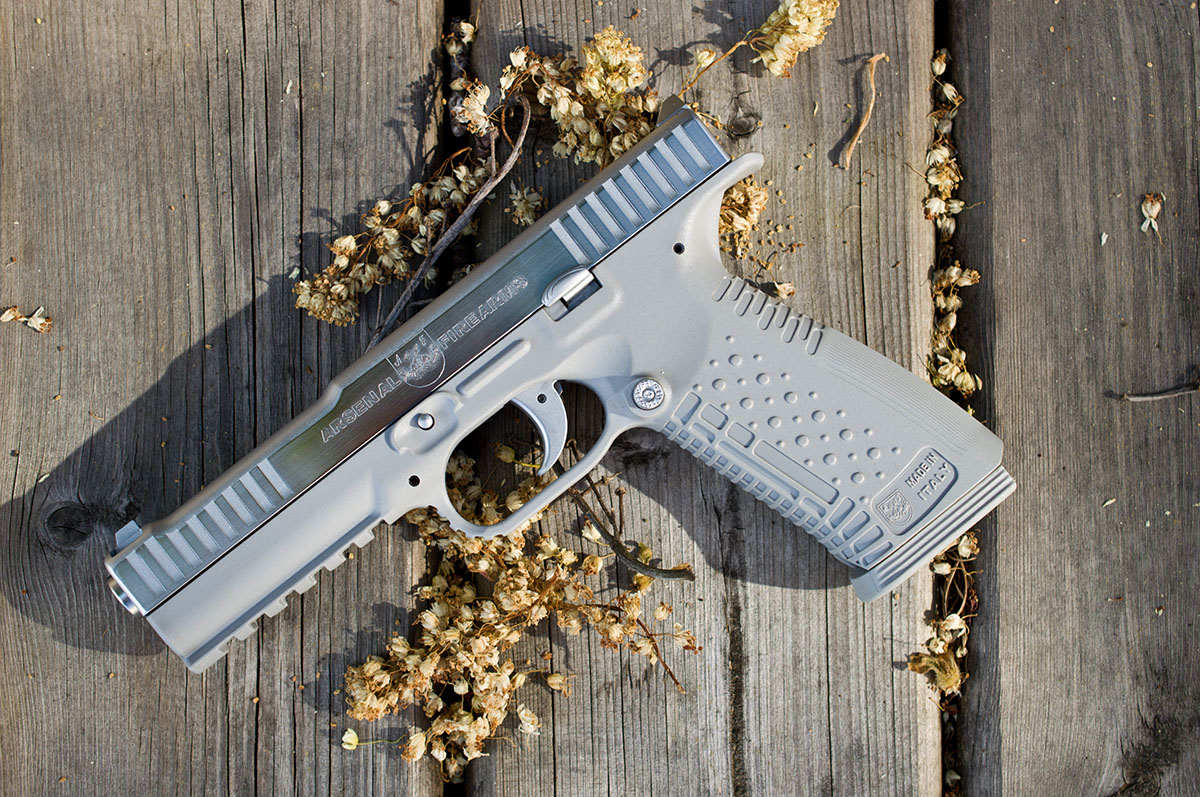
Arsenal Firearms’ founders, then, have some legitimate pedigree that goes back well before 2011, but still, as a new kid on the block, Arsenal was in need of a flashy product to put them on the map. The company certainly made waves with their AF2011-A1, a pistol that is more functional art than anything else: a double 1911 with two independent barrels in a double-wide slide, sitting on a double wide frame. The release was intended to celebrate the 100th anniversary of the 1911, although opinions on the particular form of tribute varied according to the eye of the beholder. The craftsmanship, however, was difficult to ignore and Arsenal achieved their objective of getting noticed.
The question remained, of course, art pieces and collector’s items aside, could Arsenal build a quality, mainstream pistol?
And so we come to Arsenal’s entry in the polymer pistol wars, the Strike One. The nomenclature gets a bit confusing as Arsenal Firearms refer to it as the “Strike Pistol System” and the “Strike One” almost interchangeably. We’re guessing that this is an artifact of translation; frankly going with “Strike” makes more sense in the long term, simply because if there are a few more renditions, the numbering system is going to get a little humourous for western audiences. The popularity of buying a “Strike Three” pistol may be somewhat questionable.
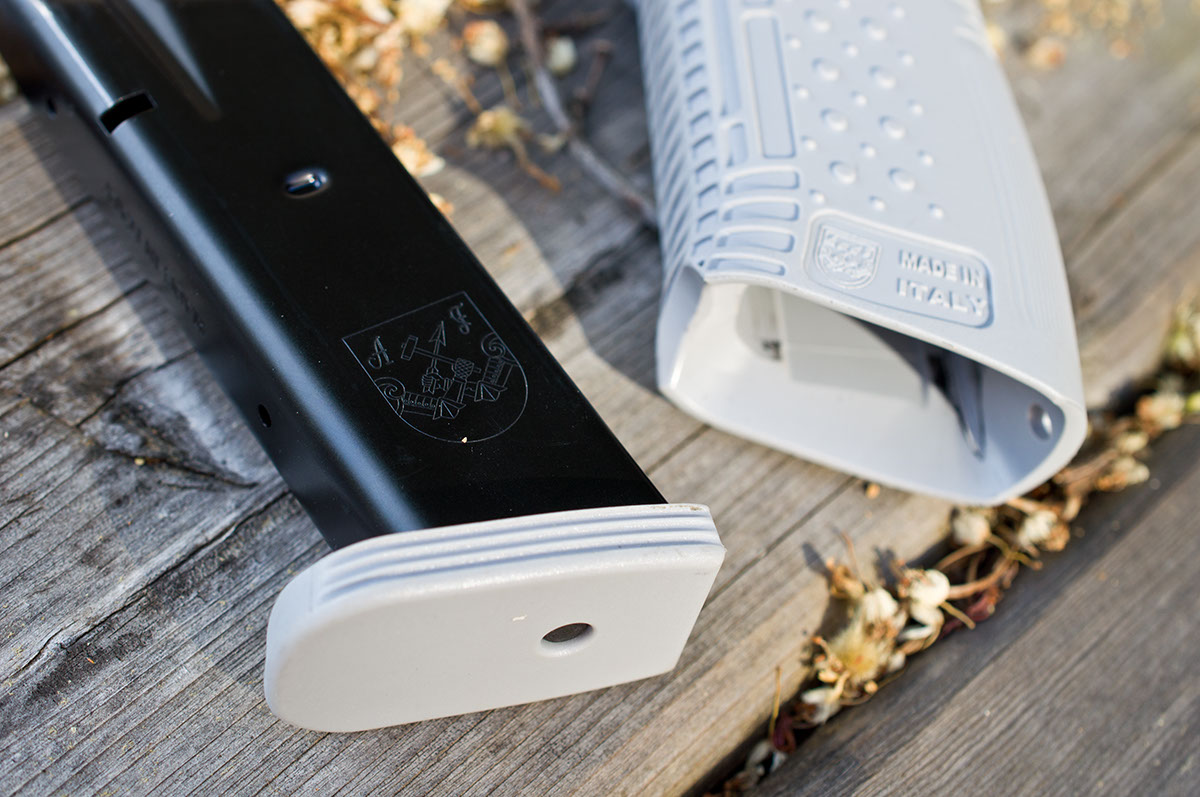
The operation of the Strike One is, however, different. Unlike virtually every modern service pistol on the planet - the exception being the occasional rotating system, which typically has generated some stoppages that require a hammer to fix - this is not a Browning-type tilting barrel design. Instead, the barrel recoils straight back, being held to the slide by means of a sliding block that is vaguely reminiscent of the all-but-forgotten Bermann Mars pistol. When in battery, lugs on the arms of the slingshot-shaped sliding block lock the barrel to the slide; during recoil, the barrel moves rearward with the slide until the sliding block engages with a cam pin mounted in the frame, pulling it downward and allowing the barrel to be stopped by a lug on the frame. The slide continues its rearward travel, ejects the case, strips a fresh round out of the mag, reengages the barrel and the sliding block cams back up and locks the barrel to the slide again.
It’s an ingenious system, although innovation for innovation’s sake is not necessarily desirable in a service pistol. The goal is to generate a more controllable recoil impulse, and Arsenal certainly believe they’ve succeeded. Their ad copy consistently refers to the controllability of the pistol, and they’ve clearly made a low bore axis a priority as the barrel nestles very low in the hand. How much does bore axis affect the performance of a pistol? It’s hard to say conclusively; a trained shooter with a high bore axis gun like a Sig 226 can turn in shot-to-shot times that are no different than a trained shooter with a Glock, so the difference may be negligible. It’s certainly been a popular buzzphrase in the gun world for the last few years, though, and there isn’t a discernible downside, so all else being equal, we’ll take the lower bore axis just in case.
Readers of other Calibre handgun reviews may recall our obsession with documenting trigger details and the Arsenal provides a good platform for contrasting trigger operations. First off, the trigger itself, the physical part, is very nice. No cheap plastic lever, this machined aluminum block feels excellent and although the difference is subtle, the pure material rigidity of the trigger gives the press an extremely solid, tactile quality that is missing from most of the striker-fired polymers. The axis of movement is also very nice - a straight press back, no swing, no swoop. Granted, it’s a bit long, and our initial reaction on feeling the length and softness of the reset was disappointment. But perhaps it’s fair to point out that Calibre employs a disproportionate number of 1911 shooters so our trigger observations can be a little particular. But trigger feel radically affects handgun performance, so we’re sticking to our guns on this one. The Strike One’s trigger is light, but long, with a long reset. Will it hinder performance? We’ll get there.
The other outwardly notable feature of the Strike One is the magazine well, which is a revelation. From now on, it should be a legal requirement of all polymer guns to have a mag well this good. It fits within the dimensions of the grip, it’s slick, and it’s shaped perfectly on the inside. Reloads are immediately, perceptibly faster.
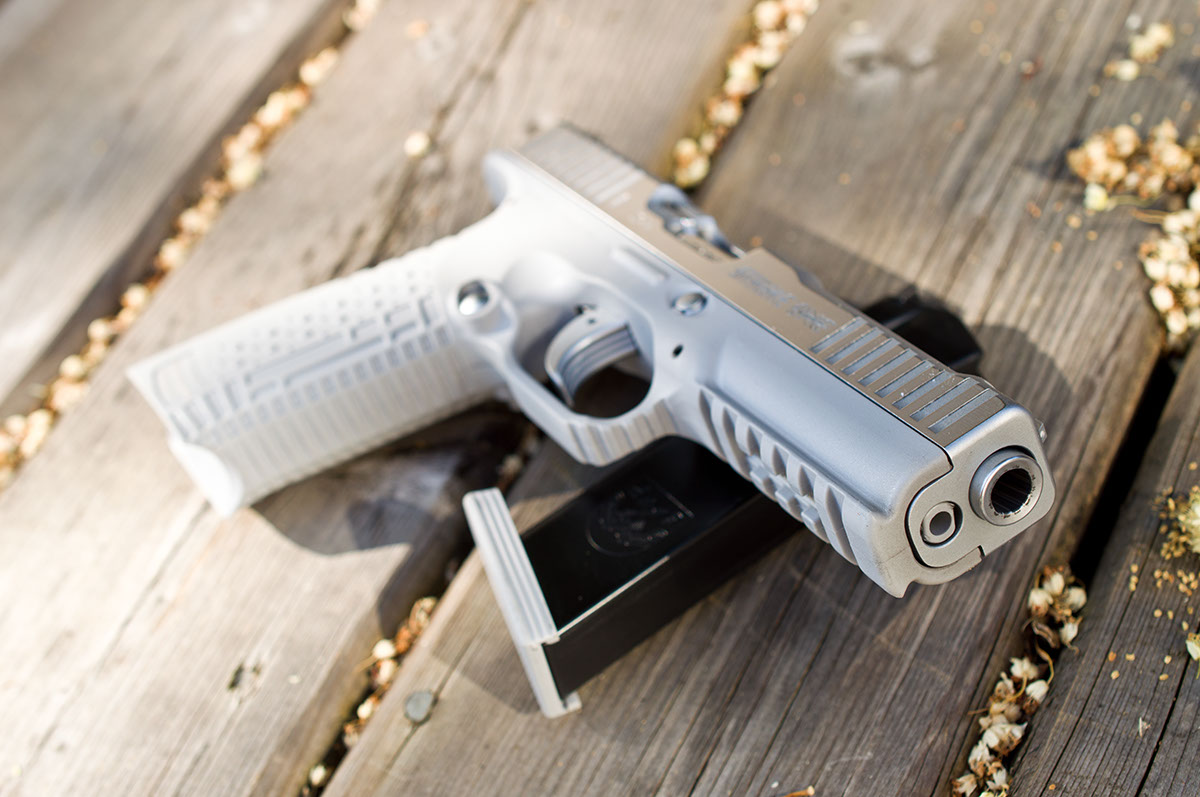
The test model came in grey and stainless and it turned heads at the range. It’s an extremely attractive pistol in this configuration and it drew an immediate crowd at Abbotsford Fish and Game, even among the seasoned shooters at Skills and Drills, Rob Engh’s long-running training sessions. The anticipation was palpable.
Sadly, we were struck down by fate. A small number of Arsenal Pistols left the factory with a defective magazine release spring, and we got one. It’s a rare problem as nearly all of the defective springs have been found and replaced, but we’ve been playing the lottery for so long here at Calibre that we’re just happy to have finally registered a win.
So what does it look like if you find one of the few remaining defects? It’s pretty obvious once you begin shooting. Within a hundred rounds, the gun began to experience failures to feed. By the time we got to two hundred, the gun couldn’t go three rounds without partially ejecting the magazine.
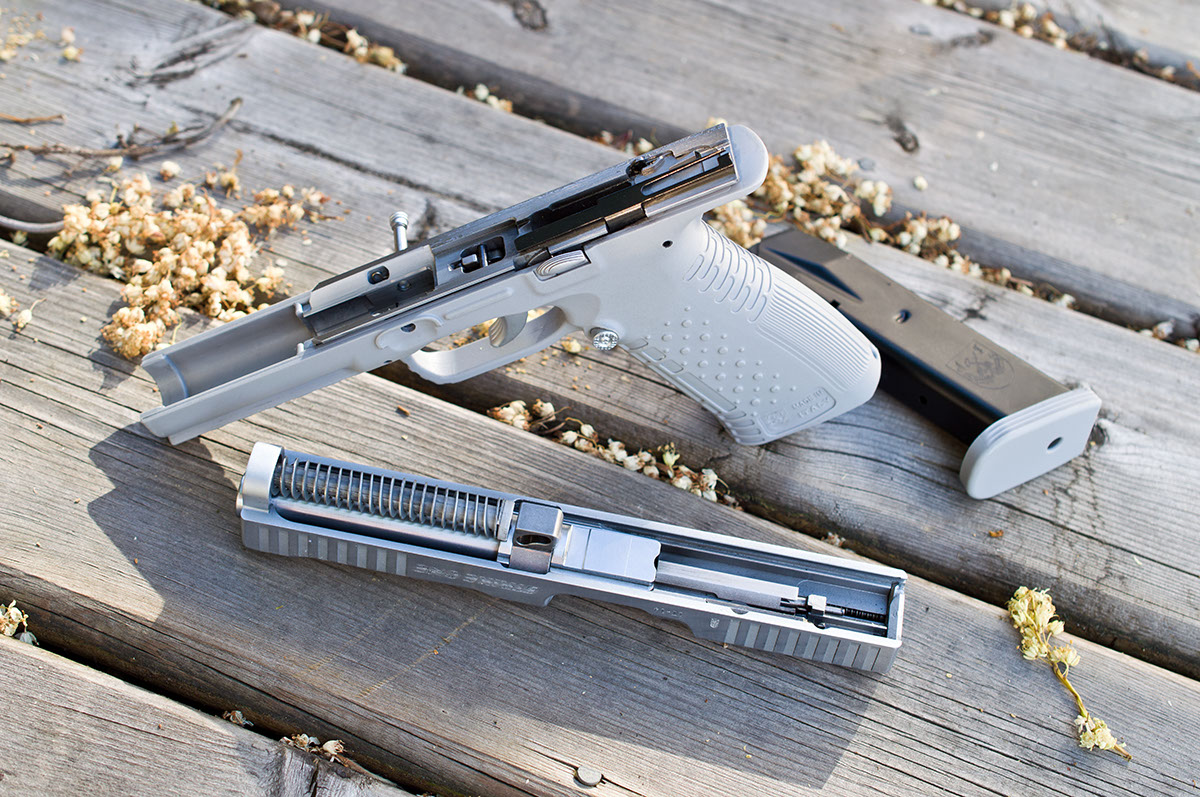
After getting it home, we contacted the supplier and described the issue. The supplier was, to put it mildly, upset, and deeply apologetic. Honestly, we weren’t too upset. For one thing, drama makes for good stories, and for another, it gave us something else to test: dealer response time if a repair is needed.
Turnaround time from “disappointed after a range trip” to “holding a new Arsenal” was about four days.
So if you have a problem with your Strike One, rest assured you’ll be taken care of. Under the circumstances, we’re not counting the initial magazine retention problem against the Arsenal.
And sure enough, the version with the new magazine retention spring holds on to the magazines perfectly well. With that sorted, we moved on to the actual shooting experience of the Strike One.
As we mentioned earlier, we went for the stainless-on-grey and it looked amazing. The engineers at Arsenal clearly put a lot of thought into getting all the details to match on the gun, with everything from the slide release to the sights in a perfect, matching stainless.
That seemed great until we started seriously shooting the pistol, at which point we suddenly realized why you don’t see a lot of stainless sights. Stainless sights on a stainless slide with white dots for visibility might work for shooting all black targets, but we found the gun turned into a grey blur at anything beyond precision slow-fire. It was crushing because the gun just looks so cool in those colours but honestly, we can’t recommend the stainless.
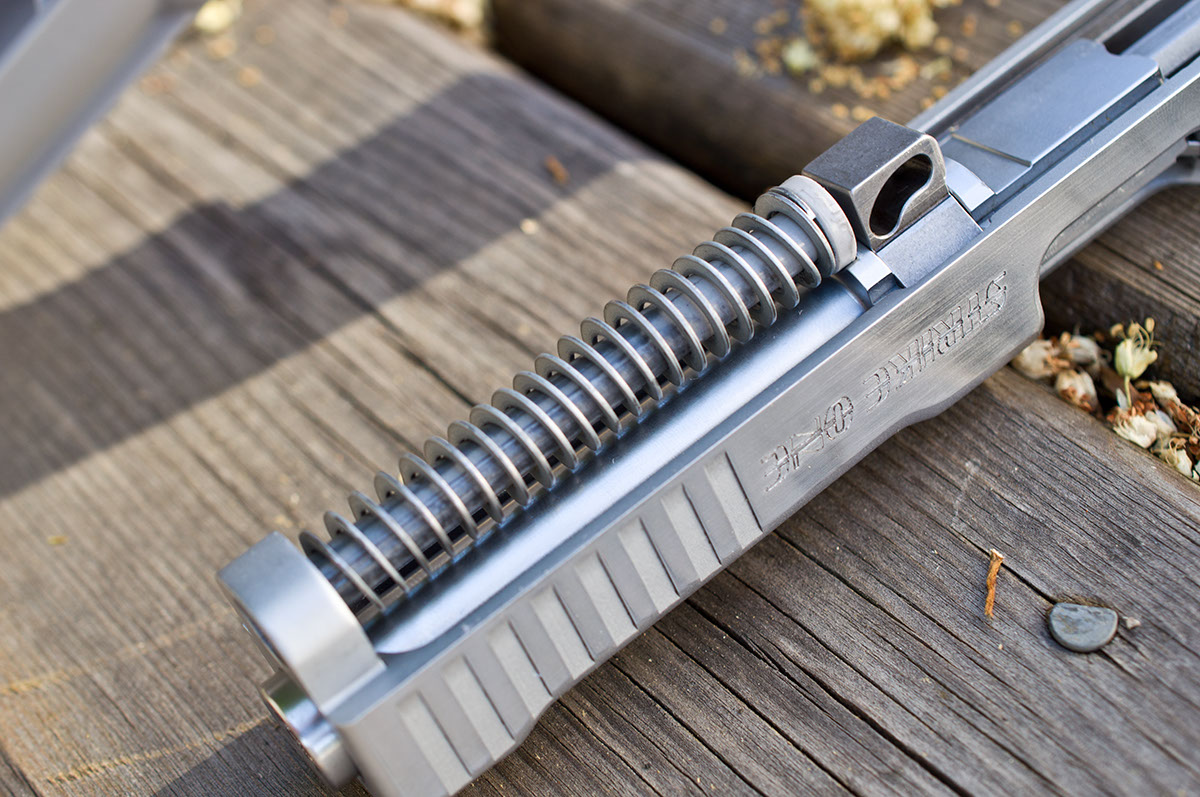
The trigger got mixed reviews at the bench, but once we were driving the gun, the long reset was surprisingly unobtrusive. Even our 1911-shooting editorial board had no issues with short-stroking the Strike One, likely on account of its positive, tactile reset. The slight hitchiness in the trigger that was noticeable when it first came out of the box began to smooth out within the first few boxed of ammunition and we found the gun to be very easy to shoot quickly, although the sights continued to be a hindrance.
If you are familiar with the light LEM triggers from HK, you might find the Strike One trigger a little easier to wrap your head around. It’s almost like a very light double action revolver with a clean, rolling break rather than the “glass rod” style break of single action pistols. At any rate, we found it to be one of the most shootable triggers of its type we’ve experienced.
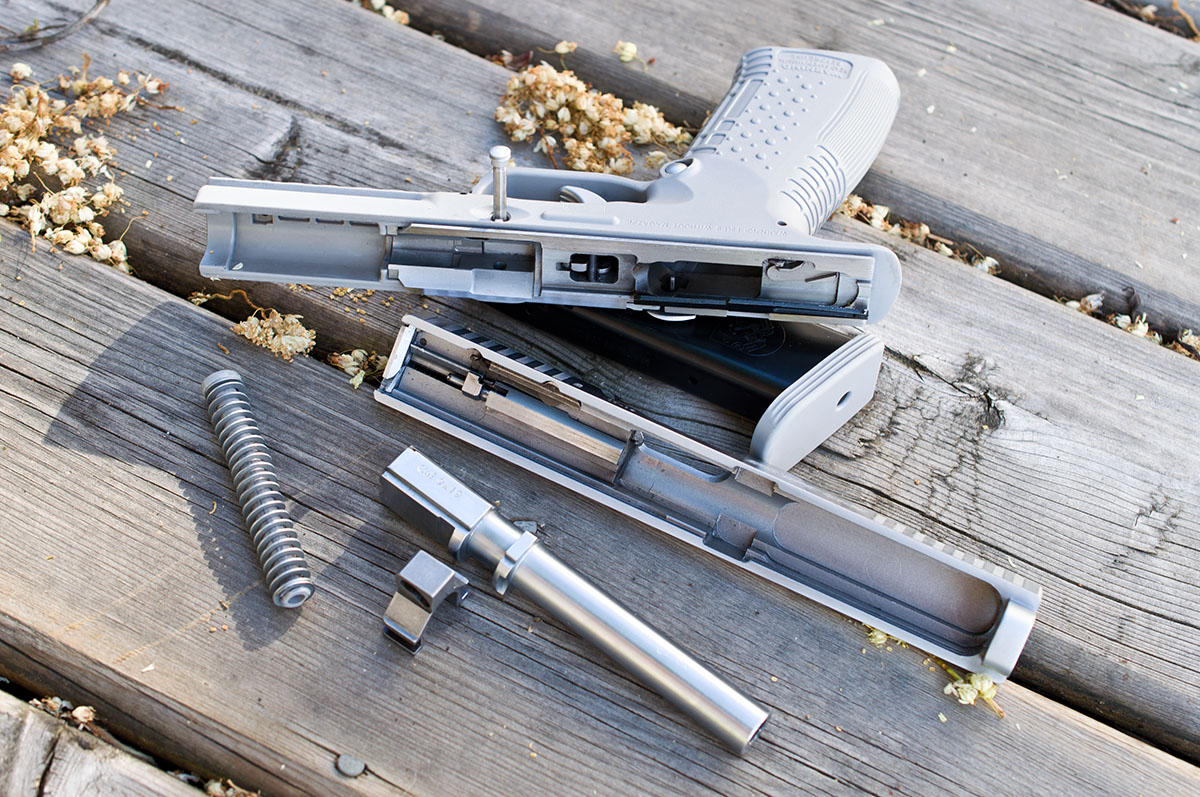
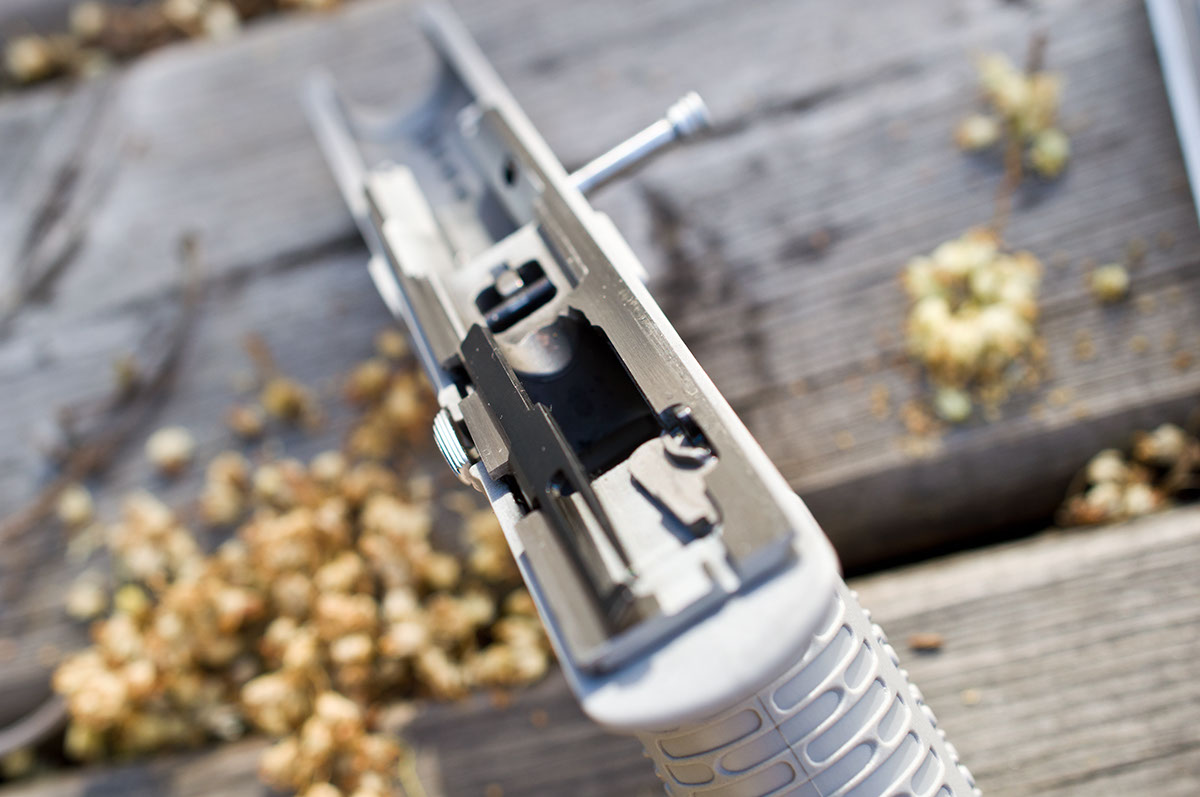
Dealer support is clearly excellent, and the strange but highly effective trigger is worth quite a bit. The magazine well sets a benchmark which, in our opinion, every manufacturer should be striving towards.
On the other hand, the aftermarket support is going to be nearly non-existent for the next couple of years, until more of these make it into private hands. If you’re considering one, make sure it comes with everything you think you’ll need, because you’re not going to be ordering up a raft of parts from your local supplier anytime soon. If you’re looking at one for competition, it might be worthwhile to investigate the new Strike One Speed, which addresses some of the quirks of the Strike One: dovetail sights, IPSC- and IDPA-compliant dimensions, and (allegedly - we haven’t tested one yet) a better trigger.